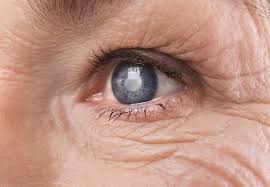A cataract is a dense, cloudy area that forms in the lens of the eye. It begins when proteins in the eye form clumps that prevent the lens from sending clear images to the retina. The retina works by converting the light that comes through the lens into signals. The retina sends the signals to the optic nerve, which carries them to the brain.
While a cataract develops slowly over time, it eventually interferes with your vision. Some people end up with cataracts in both eyes; however, they usually don’t form simultaneously.
Cataracts are common in older people, with over 50% of the people in the United States having cataracts or have undergone cataract surgery by age 80.
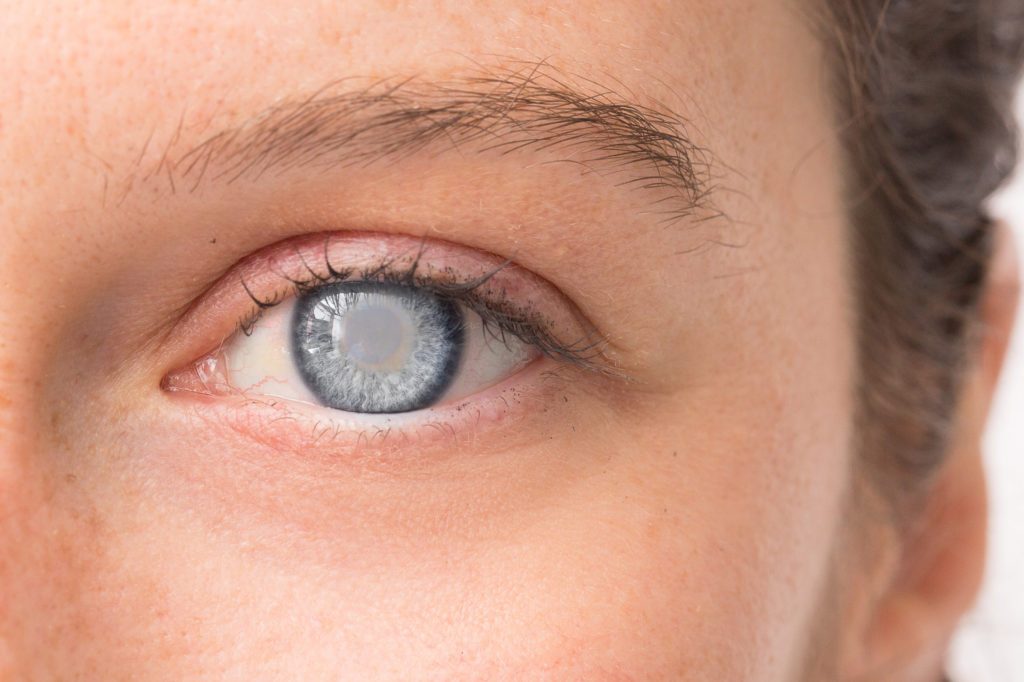
Types of Cataracts
There are different types of cataracts and they are classified based on where and how they develop in your eye. They are:
- Nuclear Cataracts: These form in the middle of the lens and cause the nucleus, or the centre, to become yellow or brown.
- Cortical Cataracts: These are wedge-shaped and form around the edges of the nucleus.
- Posterior Capsular Cataracts: These form faster than the previous two types and affect the back of the lens.
- Congenital Cataracts: These, which are present at birth or form during a baby’s first year, are less common than age-related cataracts.
- Secondary Cataracts: These are caused by disease or medications. Diseases that are linked with the development of cataracts include glaucoma and diabetes. The use of the steroid prednisone and other medications can sometimes lead to cataracts.
- Traumatic Cataracts: These develop after an injury to the eye, but it can take several years for this to happen.
- Radiation cataracts: These can form after a person undergoes radiation treatment for cancer.
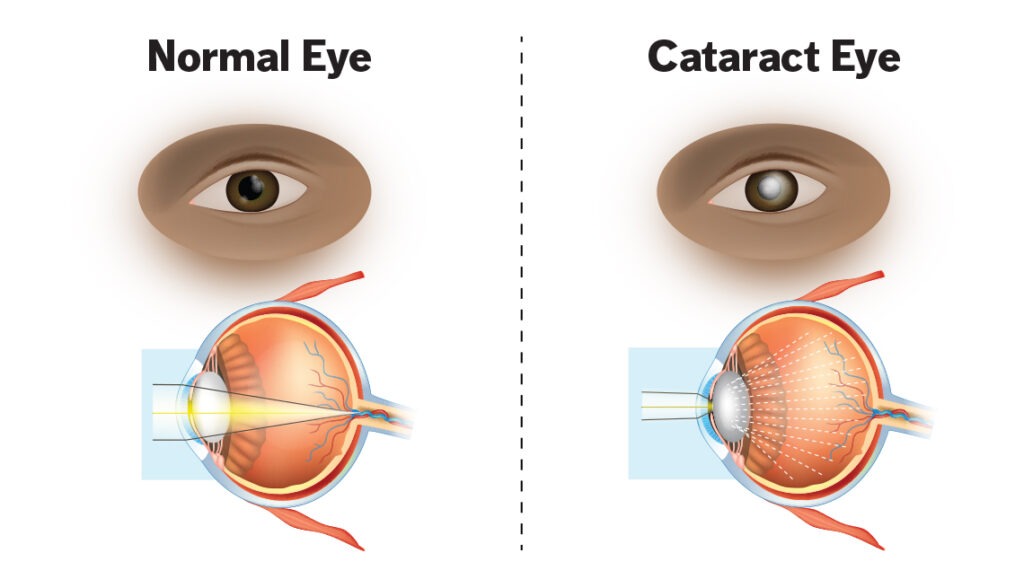
What Causes Cataracts?
There are several underlying causes of cataracts, including:
- An over-production of oxidants, which are oxygen molecules that have been chemically altered due to normal daily life
- Smoking
- Ultra-violet radiation
- Long-term use of steroids and other medications
- Certain diseases, such as diabetes
- Trauma
- Radiation therapy
Symptoms of Cataracts
Common symptoms of cataracts include:
- Blurry vision
- Difficulty seeing at night
- Seeing colours as faded
- Increased sensitivity to glare
- Halos surrounding lights
- Double vision in the affected eye
- The need for frequent changes in prescription glasses
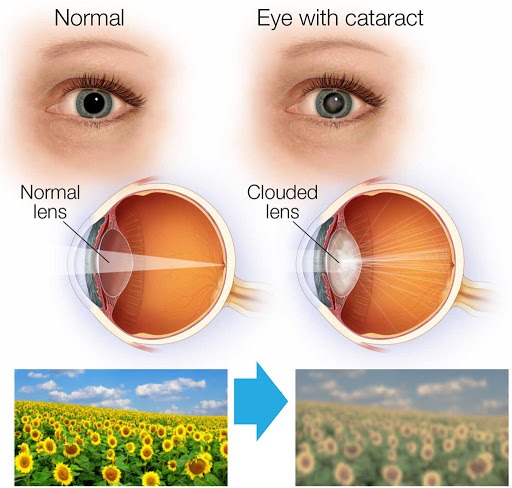
Risk Factors of Cataracts
Risk factors associated with cataracts include:
- Older age
- Heavy alcohol use
- Smoking
- Obesity
- High blood pressure
- Previous eye injuries
- Family history of cataracts
- Over-exposure to the sun
- Diabetes
- Exposure to radiation from X-rays and cancer treatments
Diagnosing Cataracts
At Vision Express in Saint Lucia, where we perform minor and major eye surgeries, your doctor will perform a comprehensive eye exam to check for cataracts and to assess your vision.
Your doctor will put drops in your eyes to make your pupils bigger, making it easier to check the optic nerve and retina at the back of your eye for damage. Other tests your doctor might perform include checking your sensitivity to glare and your perception of colours.
Prevention of Cataracts
To reduce your risk of developing cataracts, please follow these crucial steps:
- Protect your eyes from UVB rays by wearing sunglasses outside
- Have regular eye exams
- Quit smoking
- Eat fruits and vegetables that contain antioxidants
- Maintain a healthy weight
- Keep diabetes and other medical conditions in check
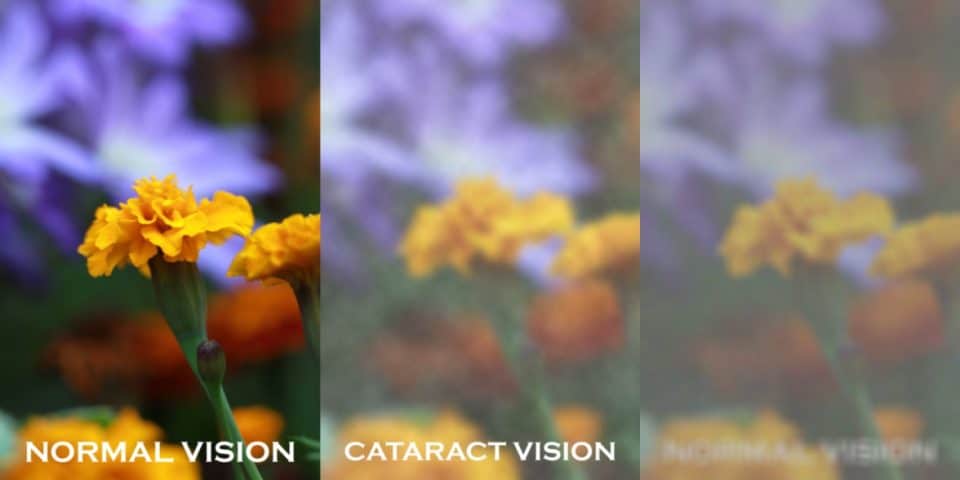
Treatment of Cataracts
If you’re unable or uninterested in surgery, Vision Express will help you manage your symptoms. However, our very attractive payment plans ensure that you get the right care you need. We can also suggest stronger eyeglasses, magnifying lenses, or sunglasses with an anti-glare coating.
Surgery
Surgery is recommended when cataracts prevent you from going about your daily activities, such as reading or driving. It’s also performed when cataracts interfere with the treatment of other eye problems.
Extra-capsular surgery involves removing the cloudy part of the lens through an incision in the cornea. After surgery, an artificial intraocular lens is placed where the natural lens was.
Surgery to remove a cataract is generally very safe and has a high success rate. Most people can go home the same day as their surgery. At Vision Express, we ensure both your safety and successful recovery from surgery. So feel safe to check us first!
Outlook of a Cataract
Cataracts can interfere with daily activities and lead to blindness when left untreated. Cataract surgery is one of the most successful procedures in the world.


